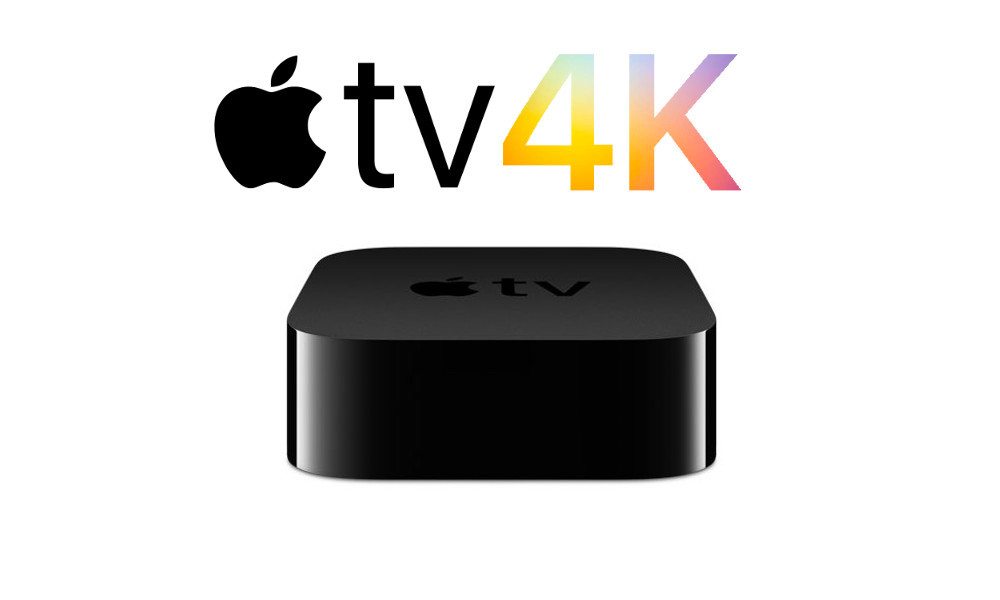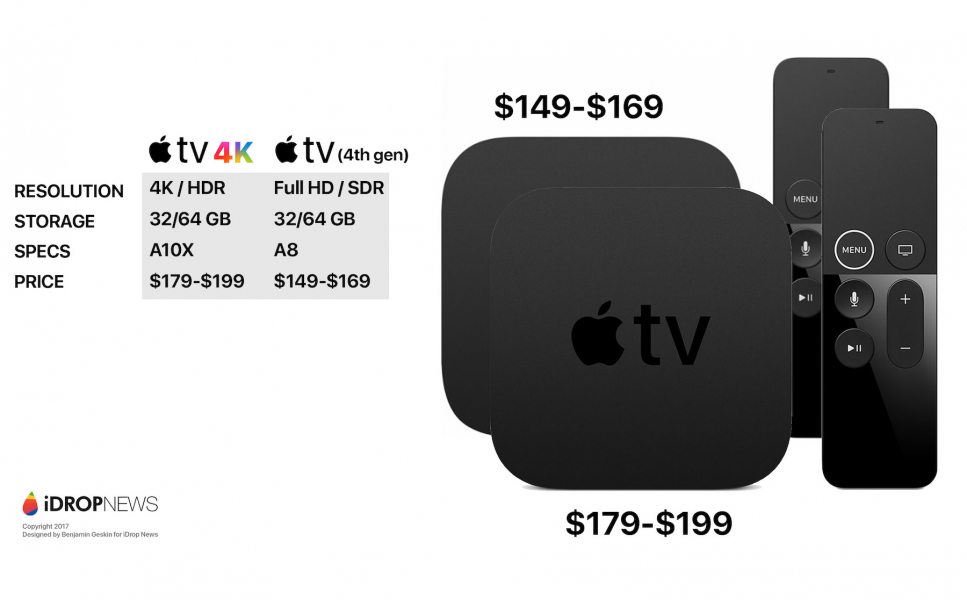Apple TV 4K vs Apple TV 4th Gen Comparison

Toggle Dark Mode
The Apple TV has finally entered the world of 4K. On Tuesday, the company unveiled its appropriately named Apple TV 4K, a next-generation set-top box with 4K streaming, HDR and a huge boost in processing power.
In addition to the new 4K device, Apple will continue to sell the fourth-generation Apple TV. This is how the two set-top boxes stack up.
Similarities
First off, the Apple TV and the Apple TV 4K will share a number of similarities in capability, software and hardware. These are the features that aren’t changing in the next-gen box.
- Both devices will fit into the same form factor. The length, height, width and weight will remain the same: 98 x 98 x 33 mm, with a weight around 425 grams.
- Both devices will be able to run the next-generation tvOS 11 with the same capabilities and features. Similarly, many of the content and apps will remain the same (with the exception of apps and content that require the Apple TV 4K’s resolution and processing boost).
- Both devices will come with the Siri Remote.
Differences
Despite the similarities between the two Apple TV devices, the Apple TV 4K sports a number of significant upgrades in resolution, processing power, and other minor specifications.
Resolution
The biggest difference between the two boxes will be in terms of resolution. While the Apple TV will remain in HD, the Apple TV 4K — like its name suggests — will be able to stream 4K content with support for various HDR standards. Here’s the specifics.
- The Apple TV 4K will be able to stream 4K video content with a maximum resolution of 2160p. The next-generation set-top box will also support Dolby Vision and HDR10.
- The older Apple TV will retain the maximum video output of 1080p, with no HDR capabilities.
Basically, the Apple TV 4K will be getting a big boost as far as resolution goes. Specifically, it’ll be able to output about four times the amount of pixels than the non-4K Apple TV.
HDR is also a big deal and goes beyond pixel resolution. For consumers, the addition of HDR support will mean better display quality, more visible colors and much brighter overall pictures.
Processing Power
Additionally, the Apple TV 4K is getting a huge boost in processing power. Essentially, the next-generation set-top box will be just as powerful as Apple’s iPad Pro lineup.
- The Apple TV 4K will sport an A10X Fusion Chip with 64-bit architecture. It’ll also come equipped with 3 gigabytes of RAM. The Apple TV will be available in 32GB or 64GB storage configurations.
- The fourth-generation Apple TV will retain the A8 processor with 2GB of RAM. The A8 is the same chipset used in the company’s 2014 iPhone 6 and 6 Plus devices. It’ll also only be available in the 32GB configuration.
The Apple TV 4K gets a massive upgrade in terms of processing power. If you care about buffering time, you’ll definitely want to opt for the higher-end set-top box. Additionally, the Apple TV 4K’s chipset will allow it to play games and run apps like never before — also something to consider.
Other Differences
Connectivity
- The Apple TV 4K will use HDMI 2.0a and Bluetooth 5.0. It’ll also add support for Gigabit Ethernet connectivity.
- The Apple TV will use the older HDMI 1.4 and Bluetooth 4.0. It’ll cap out at 10/100BASE-T Ethernet connectivity.
Price Point
- The Apple TV 4K will start at $179 for the 32GB configuration and $199 for the 64GB model.
- The Apple TV will run customers $149 for the 32GB configuration.
Basically, Apple has made it relatively cheap to “jump” up a tier. It’s only $30 to “upgrade” from an Apple TV to an Apple TV 4K. After that, it’s only $20 more to buy the top-of-the-line 64GB Apple TV 4K.







